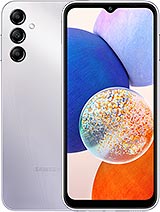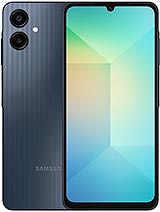Xiaomi Redmi 13 5G hands-on review

Software
The Redmi 13 5G comes with Xiaomi HyperOS running on top of Android 14. The company has promised two major Android updates and four years of security updates for the device. Moreover, Xiaomi also promises 36 months of lag-free experience, something we haven't seen before.

The software experience on the Redmi 13 5G is similar to other Xiaomi HyperOS devices. The difference is that being an entry-level device, many of the UI flourishes, such as icon animations and transparency effects are disabled to maintain performance. This is similar to the non-5G model.

Since our Redmi 13 5G review unit was from India, it came with the usual set of annoyances unique to the Indian models. This mainly included an astonishing amount of bloatware (we counted 17 third-party apps) on top of the apps from Google and Xiaomi, many of which were duplicated (two app stores, two photo galleries, two file managers, etc.). Then there are also the advertisements and forced recommendations within apps, which even come in the form of push notifications.
Aside from that, this is your typical HyperOS experience, which we have covered in detail in our review here (Xiaomi HyperOS (Android 14) review - GSMArena.com news).
Performance
The Redmi 13 5G runs on the Qualcomm Snapdragon 4 Gen 2 AE chipset, which is the same chip as on last year's Redmi 12 5G but with a 100MHz boost on the two Cortex A78 cores. Aside from that, the specs are identical. Our review unit came with 8GB of memory although there is also a variant available with 6GB. All models get 128GB storage.

While it would have been nice to see a newer chip, the Snapdragon 4 Gen 2 still performs quite well, with the Redmi 13 5G providing very usable performance in everyday apps. You can tell why Xiaomi feels confident claiming three years of lag-free experience on the device and while we can't verify that yet, the claim seems plausible.
Of course, being a low-end chip, it doesn't quite have the horsepower on tap for running demanding games. However, if you are mostly into lightweight titles, then you should be able to get by fine.
An advantage of having a low-power chipset is that cooling is a non-issue. The phone barely even gets warm to the touch and even under demanding benchmark workflows, there was little to no thermal throttling.
Reader comments
- U
- 16 Jan 2025
- LiF
That's wh I only buy phones with at least 1 year old ,my friends don't understand that after a year ill know for sure if it Isa good buy ,and the price ,I will never ever pay more than 300 euros for a phone as a man I don't need 13 ca...
- Ruly
- 21 Dec 2024
- txF
Not a major changes from Xiaomi Redmi 12 5G. According to review performed by GSMArena, there are few increase in processor clock speed and display refresh rate that now reachs 120 Hz max. The device is fresher than Redmi 12 5G which resulted a more ...
- Chandan pawar
- 13 Dec 2024
- CbJ
My mobile not proper work battery esu in my mobile pls help
















